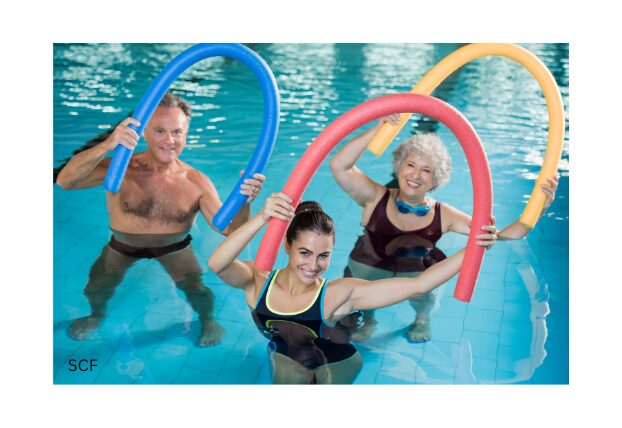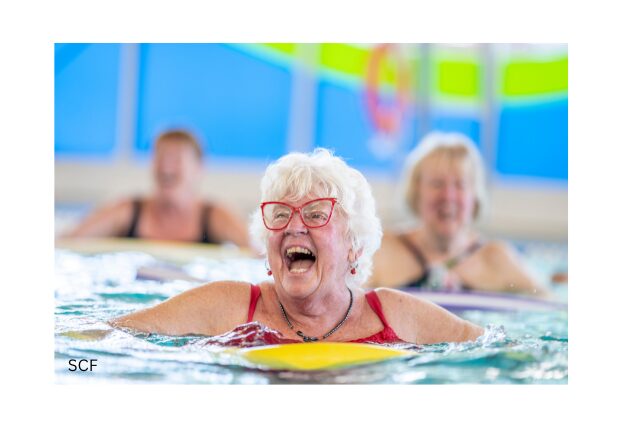Picture this: floating effortlessly in a pool, surrounded by soothing water, while engaging in movements that strengthen your body without putting strain on your joints. That’s the magic of aquatic exercises for older adults. These water-based workouts provide a gentle yet effective way to maintain fitness, improve health, and enhance emotional well-being.
As we age, traditional high-impact exercises can become challenging and sometimes even harmful to joints and muscles. Aquatic exercises offer a low-impact alternative that’s accessible, fun, and packed with benefits. Let’s dive into how water-based fitness can transform senior health and happiness.
1. Why Water Works Wonders for Seniors
The buoyancy of water is a game-changer. It reduces the weight your body has to bear, making it easier to move without joint pain or stiffness. This unique property makes water-based exercises particularly appealing to seniors who may struggle with arthritis, osteoporosis, or other mobility issues.
Key Benefits of Aquatic Exercises:
- Low Impact on Joints: The water cushions movements, minimizing stress on joints while still providing resistance for strength-building.
- Enhanced Flexibility: Gentle stretches in the water improve range of motion and help prevent injuries.
- Improved Cardiovascular Health: Activities like swimming and water aerobics boost heart health by promoting circulation and endurance.
- Stress Relief: The calming nature of water, combined with the physical activity, helps reduce stress and elevate mood.
Example: Margaret, a 72-year-old with arthritis, found that water walking allowed her to stay active without aggravating her joints. She now enjoys regular aquatic sessions that keep her moving pain-free.
2. A Variety of Aquatic Exercises for Every Fitness Level
There’s a whole world of water-based exercises tailored to different needs and preferences. Here’s a closer look at some popular options for seniors:

Aqua Aerobics
Aqua aerobics combines rhythmic movements with the resistance of water to create a full-body workout. It’s a fantastic way to improve strength, coordination, and balance, all while having fun in a group setting.
Water Walking
Walking in waist-deep water is a simple yet effective exercise. The resistance provided by the water strengthens muscles and improves cardiovascular health without the impact of walking on land.
Swimming
Swimming is the ultimate full-body workout. Whether you prefer freestyle, backstroke, or breaststroke, it enhances core strength, builds endurance, and improves lung capacity.
Aquatic Yoga or Tai Chi
These gentle, flowing exercises adapted for the pool help improve balance, flexibility, and mental focus. The water adds a calming element, making these activities especially enjoyable for seniors.
Water Therapy
Also known as hydrotherapy, this form of exercise is particularly beneficial for those recovering from surgery or dealing with chronic pain. It combines therapeutic movements with the supportive properties of water to promote healing and mobility.
Example: Bill, a retired teacher, enjoys aqua aerobics twice a week with friends. The group environment keeps him motivated, and the workouts have significantly improved his balance and stamina.
3. Physical and Emotional Perks of Aquatic Workouts
Aquatic exercises offer a unique combination of physical and emotional benefits, making them an ideal choice for seniors seeking overall wellness.
Physical Benefits:
- Increased Strength: The natural resistance of water helps tone muscles and build endurance.
- Better Balance: Activities like water walking improve coordination, reducing the risk of falls.
- Pain Relief: The buoyancy of water alleviates pressure on joints, providing relief from conditions like arthritis.
Emotional Benefits:
- Stress Reduction: The soothing sensation of water and rhythmic movements help reduce anxiety and promote relaxation.
- Boosted Mood: Engaging in water exercises releases endorphins, leaving participants feeling happy and energized.
- Social Connection: Many aquatic classes foster a sense of community, providing opportunities to make friends and combat loneliness.
Example: After starting water therapy for her back pain, Joan noticed not only physical improvements but also a renewed sense of optimism. The group setting allowed her to bond with others who shared similar challenges.
4. Creating a Safe and Effective Aquatic Routine
While aquatic exercises are generally safe, it’s important to follow guidelines to maximize benefits and minimize risks. Here’s how seniors can approach water workouts safely:
Consult Your Doctor
Before starting any exercise program, it’s wise to get clearance from your healthcare provider, especially if you have preexisting conditions.
Start Slow
Ease into water exercises with shorter sessions and simple movements. Gradually increase intensity and duration as your body adjusts.
Stay Hydrated
It’s easy to forget to drink water while exercising in the pool, but staying hydrated is just as important during aquatic workouts.
Use Proper Equipment
Invest in water shoes for grip and stability, and consider flotation devices if needed for added support.
Join a Class
Working with a certified instructor ensures that exercises are performed correctly and safely. Group classes also add an element of fun and camaraderie.
Example: Tom, an 80-year-old beginner, started with 15-minute water walking sessions. With his instructor’s guidance, he’s now confidently participating in 45-minute aqua aerobics classes.
5. Integrating Aquatic Exercises into Daily Life
Consistency is key to reaping the benefits of aquatic exercises. Here are tips for making water workouts a regular part of your routine:
- Set a Schedule: Aim for at least 2-3 sessions per week to maintain progress.
- Combine Activities: Mix different exercises like swimming, water walking, and aqua aerobics to keep things interesting.
- Find a Pool Nearby: Look for community centers or gyms with pools that offer senior-friendly classes.
- Buddy Up: Exercising with a friend or family member can make the experience more enjoyable and motivating.
Example: Mary and her daughter attend aquatic yoga classes together every Saturday morning. It’s become a cherished routine that strengthens both their bodies and their bond.
Conclusion: Dive into a Healthier Lifestyle
Aquatic exercises are a fantastic way for older adults to stay active, healthy, and happy. From improving cardiovascular health to relieving joint pain and reducing stress, the benefits are endless. Plus, the water’s gentle support makes it an accessible and enjoyable option for seniors of all fitness levels.
Whether you’re splashing around in a group class or enjoying a peaceful solo swim, these activities promise more than just physical benefits—they offer a pathway to a vibrant, fulfilling lifestyle. So, grab your swimsuit, head to the nearest pool, and dive into the transformative world of aquatic fitness. Your body and mind will thank you!



